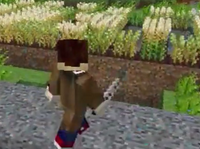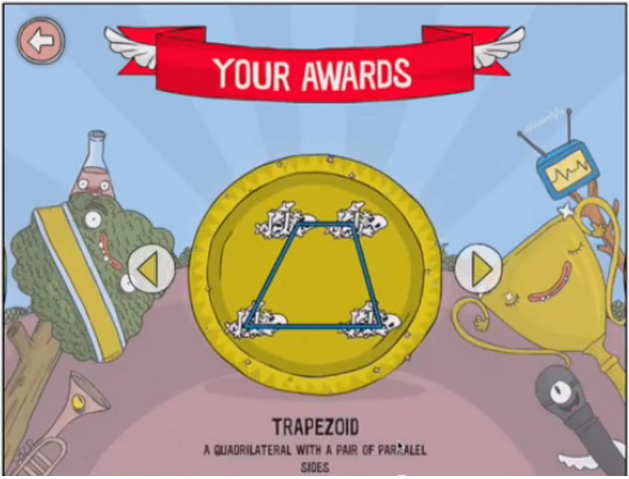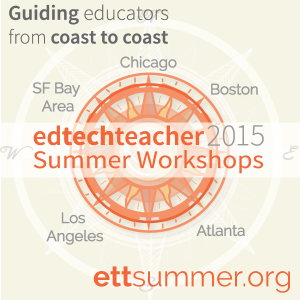This guest post from Courtney Pepe (@iPadQueen2012) first appeared on Daily Genius.
Jean Piaget once said that “play is the answer to how anything new comes about.” As educators in the digital age, it is important that we embrace the power of play in our classrooms. One of the ways that we can redefine our practice is by using game education in our schools. Game education is a powerful way to engage 21st century learners in a variety of cognitively complex tasks that lead to deeper levels of understanding. Educational games help students to learn about certain subjects, expand their thinking on specific concepts, and reinforce skill development while they play while increasing engagement, empathy and excellence in the classroom.
Game #1 – Minecraft
Teacher #1 – Matthew Farber (@MatthewFarber), Social Studies
At Valleyview Middle School in Denville, New Jersey, Matthew Farber -7th Grade Social Studies teacher and doctoral candidate in the Educational Technology Program at New Jersey City University - uses Minecraft and project-based learning to help his students make a deeper connection to the concept of the colonization of America. With Minecraft, students create worlds that are reflective of the original 13 colonies including crops, climate, and societal structure. They then create videos intended to showcase their understanding of their colonies. The video below provides an example of how the students created these worlds in Minecraft and then demonstrated their understanding of the history through their video presentations.
The Delaware Hour from Matthew Farber on Vimeo.
Says Farber of Game Education; “I use games in social studies because the mechanics (e.g. empathy and role-play) bring authentic meaning to past events.”
Game #2 – Osmo Tangible Play Words
Teacher #2 – Kristi Meeuwse (@KristiMeeuwse), Literacy
At Dayton Hall Elementary School in Charleston, South Carolina, kindergarten teacher and Apple Distinguished Educator, Kristi Meeuwse, chose to pilot Tangible Play by Osmo because it is hands on and manipulative in nature. Young learners can use the Words app and then Scrabble tiles to practice sight words, spelling, and phonics. The iPad displays a picture of a word, and students play a guessing game, Wheel of Fortune Style, where they place Scrabble tiles that can be read in front of the iPad.
Recently, Osmo has included a new feature which allows the user to load in his or her own sets of vocabulary images, meaning that this game can be used to teach academic vocabulary in any subject area or with any age group with minimal prep time on the part of the teacher. Meeuwse says she loves using this form of game education with her little ones because “it incorporates both technology and tangible objects to meet the diverse sensory learning needs of my students.”
https://www.youtube.com/watch?v=6olkzu_zKIg
Game #3 – Land of Venn
Teacher #3 – Ryan Read (@Ryan7Read), Math
At Christian Life School in Genoa Illinois, Technology Facilitator, Ryan Read, uses the Land of Venn to explore the concepts of Geometry and Strategy with students in his third, fourth, and fifth grade math classes. Land of Venn takes a great approach to learning by combining two theories behind the teaching of math education. The first of these is Van Hiele’s Model which encourages analysis of both properties and classification of shapes in elementary math classes to build a strong foundation for the later grades. It asserts that students will understand the hierarchy between shapes rather than being locked into remedial patterns.
The second theory behind this game is the creator’s theory of “Gameducation” where the learner is not passive but is actively engaged in the content. The student is so engaged in the game that they have the chance to practice the principles of geometry with intense focus and repetition as they analyze and apply them in a constantly changing situation.
Read has this to say about the implementation of games in schools: “in game education we aren’t trying to beat the game – we are always coming back to get a higher score in education.”
Game #4 – Sphero the Robot
Teacher’s #4 and #5 – Jessica Ali and Wendy Thompson, Special Education Interdisciplinary
The faculty at the A. Harry Moore School of NJCU recently received a grant from Sphero, a company that makes ball-size glowing robots that teachers can use to o teach literacy, coding, STEM. All of the teachers, support specialists, and students in the school are enjoying the 10 Sphero Robots which can be paired via Bluetooth with an iPad, iPhone, iPod, Kindle, and most Android devices. The Sphero website features 10 different lessons that involve coding and programming the robot and are aligned to various Common Core standards as well as four different STEM engineering challenges such as a Chariot Challenge, a Hydro-Hypothesis, and a Maze Mayhem. The demonstration teachers have been exploring the 15 different apps that can be used as games to expand academic concepts while reinforcing different skills.
In Ms. Ali’s classroom, students use the app Pass Sphero to practice speaking and listening skills as well work on cognitive skills such as following directions. Students are able to use the app to identify their favorite color. They smile, laugh, and applaud as the iPad visually prompts them to shake the robot so it will change color over and over again. They sit in a learning circle and are instructed to pass the robot to their neighbor when the robot changes color. Ms. Ali says, “the connection that creative play supports development in multiple areas such as language skills and cognition was happening with my students when they interacted with Sphero.”
Wendy Thompson collaborates with building therapists and uses the basic Sphero App on iPad to have students compete in teams where they drive Sphero with a joystick and then measure the distance traveled by the robot and collect and analyze this data as a class. She also uses Sphero Macrolab to teach her students basic coding commands. In the words of Zachary, a 13 year old student in her class, “Sphero made learning how to measure distance fun. It was like playing a game with your friends.”
Game Education in the Classroom
Are you wondering how you can implement game education in your school? You can start small and dream big. Have your elementary language arts class play with Osmo for twenty minutes on a Friday. Have your math class play Land of Venn for five minutes a day as their digital exit pass. Ask your principal to spend $100 on a Sphero for your upcoming science fair. Regardless of your discipline, using any of the games mentioned in this piece will change the look, feel, and tempo of learning in your 21st century educational environment.
Learn more about Gamification, STEM, and more this Summer!
- Enhancing STEM Curriculum
- Creating Maker Spaces
- Project Based Learning
- And More!



